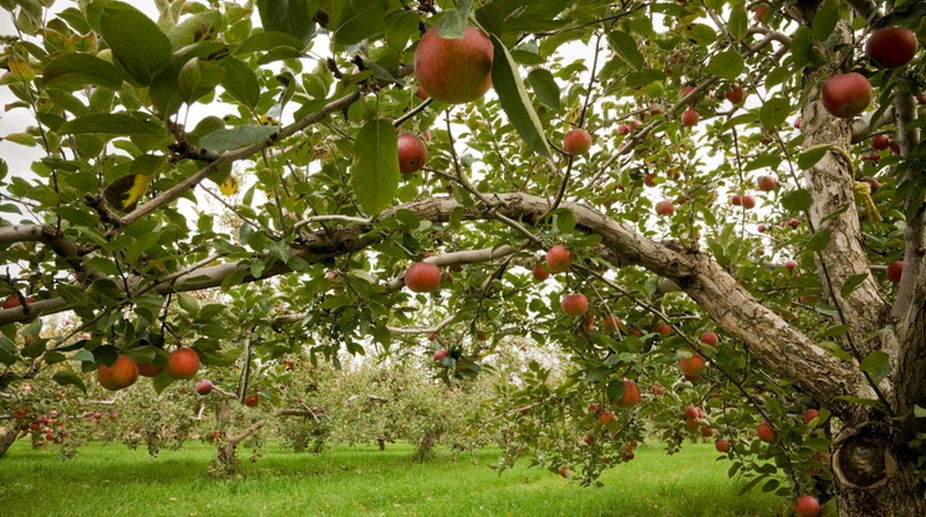Punjab: Union Minister Joshi assures farmers continued dialogue to end deadlock
Punjab Government yet again played a pivotal role in breaking the ice between the Centre Government and farmer unions. Union…

Representational Image (Getty Images)
Experts at Dr YS Parmar University of Horticulture and Forestry (UHF), Nauni on Thursday advised horticulturalists to start management of apple core rot disease which causes loss to the tune of Rs 72 crore.
Officials said that over the past few years, core rot of apple has emerged as one of the major constraints in apple production as it affects almost every orchard of the state that results in loss of 30 to 40 per cent of production.
Advertisement
“Every year this disease results in economic loss to the tune of Rs 72 Crore to the state as the affected fruits initially do not produce any signs and symptoms as the pathogen remains incipient in seed core of the fruit,” officials said, adding, however, such fruits have a bitter taste when eaten.
Advertisement
These fruits are also unsafe for consumption as the fungi responsible for core rot produce lots of mycotoxins that affect consumers’ health. Rains at the time of pink bud or petal fall result in sufficient moisture and the nectar on the flower attract the visiting insects, which help in pollination. However, they also carry the propagules of fungi responsible for core rot, they said.
UHF Plant Pathology department head Dr AK Gupta said core rot of apple affects the seed core of the fruit and this area shows dry or wet rot.
In the core region, the fungi responsible for the rot, remain incipient till fruits start ripening and reach maturity. Increased levels of total soluble sugars at the maturity encourage the activity of core rot fungi, which results in the bitterness of pulp in the surrounding areas of the core.
“Affected immature fruits develop early colour. When such fruits are cut into two halves, the central core of these fruits show fungal growth and during storage soft wet rotting occur in such fruits,” he said.
“This disease occurs frequently due to the fungi Alternaria alternata and Trichothecium roseum,” he said.
For the management of this disease, proper pruning and training of apple trees are suggested to allow proper sunlight and air to reach every part of the tree. At the pink bud stage, spray of Mancozeb (600g) or Zineb (600 g) per 200 litres of water, is recommended.
In addition, orchards having a high incidence history of core rot, sprays of Difenoconazole (30 ml) or Hexaconazole (100 ml) per 200 litres of water are generally recommended for the management of apple scab and powdery mildew at petal fall stage, Gupta said.
Advertisement